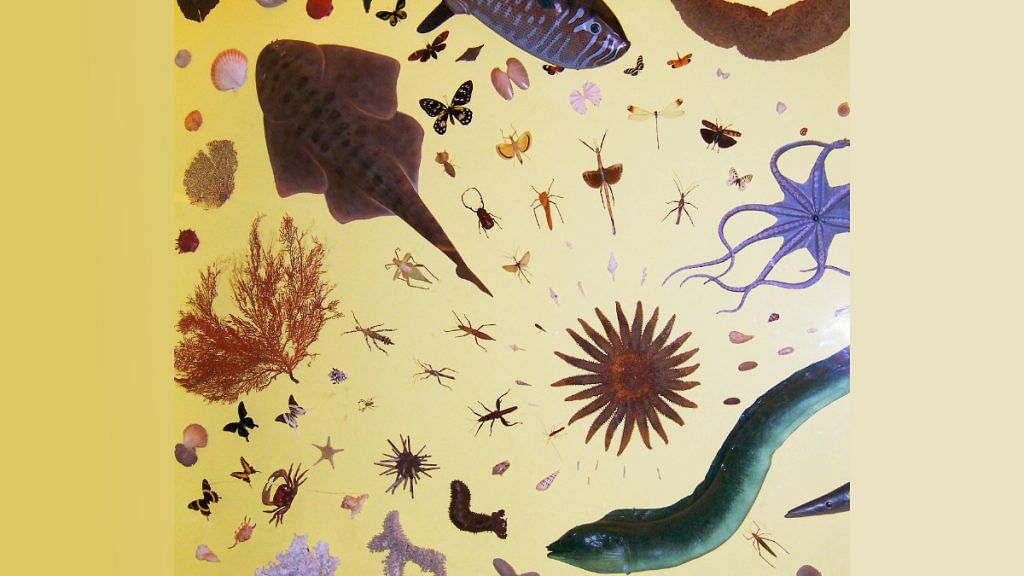New Delhi: A simple two-carbon compound may have been a crucial player in the evolution of metabolism before the advent of cells, according to a new study by researchers at the University College London.
Published in PLOS Biology, the finding sheds new light on the earliest stages of prebiotic biochemistry, and suggests how adenosine triphosphate (ATP) came to be the universal energy currency of all cellular life today.
Building ATP’s complex chemical structure from scratch is energy intensive and requires six separate steps — which also require ATP.
Although scientists have some theories on how an ATP skeleton could have formed without energy from already-formed ATP, the molecule was likely quite scarce before life began on Earth — and some other compound must have played a central role in the formation of ATP.
The most likely candidate, researchers say, was the two-carbon compound acetyl phosphate (AcP), which functions today in both bacteria and archaea as a metabolic intermediate. Read more
Also Read: Scientists create soft robots that grow like plants
‘Superorganisms’ of bacteria, fungi can leap across teeth to cause decay
Scientists from the University of Pennsylvania have discovered that cavity-causing bacteria and fungi in saliva can team up to form “superorganisms” that can actually sprout limbs to crawl and even leap across teeth.
The study published in Proceedings of the National Academy of Sciences, describes how they made the unexpected discovery while studying saliva samples from children with severe tooth decay.
They had noticed that two species were involved in cavity formation — the bacteria Streptococcus mutans and the fungus Candida albicans — and later found that they actually formed clusters together.
These clusters, or assemblages, are made up of communities of bacteria attached to networks of fungal filaments, all glued together with a material known as an extracellular polymer. This made the microbes more resilient than either species on their own, sticking to teeth better and increasing their resistance to antimicrobials.
The team grew them in a lab on a tooth-like material, incubated in human saliva, and watched them with a microscope that recorded them in real time.
They found that even though neither species can move on its own, together they were able to form fungal limbs that crawl across the tooth surface at speeds of over 40 microns per hour. They could even leap more than 100 microns in a single bound, which is more than 200 times their body length. Read more
Also Read: Dinosaurs may have been on a decline long before the fateful asteroid hit Earth
Scientists decode how dormant spores return to life
Scientists at the University of California San Diego in the US have discovered that bacterial spores have an extraordinary ability to evaluate their surrounding environment while remaining in a physiologically dead state.
The study, published in Science, explains how when facing starvation and stress conditions, some bacteria enter a dormant state in which life processes stop. This dormancy allows these cells, called spores, to withstand punishing extremes of heat, pressure and even the harsh conditions of outer space for thousands of years.
Eventually, when conditions become favourable, dormant spores can wake up in minutes and spring back to life.
Until now scientists did not know whether spores can monitor their environment “in their sleep” without waking up.
The team has now found that spores use stored electrochemical energy, acting like a capacitor, to determine whether conditions are suitable for a return to normal functioning life. Read more
Laughing gas could help search for signs of extraterrestrial life
A study published in The Astrophysical Journal suggests laughing gas or nitrous oxide (N2O) may be a key indicator of planets that have the potential to harbour life.
The study was conducted by scientists from University of California, Riverside, Purdue University, American University, the Georgia Institute of Technology and the NASA Goddard Space Flight Center.
Chemical compounds in a planet’s atmosphere that could indicate life, called biosignatures, typically include gases found in abundance in Earth’s atmosphere today.
Researchers determined how much N2O living things on a planet similar to Earth could possibly produce. They then made models to simulate how living organisms could produce N2O in “an Earthlike marine biosphere”.
They also determined amounts of N2O that could be detected by an observatory like the James Webb Space Telescope.
Under certain circumstances, N2O could be detected in an atmosphere and still not indicate life. A small amount of nitrous oxide is created by lightning, for example. But alongside N2O, lightning also creates nitrogen dioxide, which would offer astrobiologists a clue that non-living weather or geological processes created the gas.
Others who have considered N2O as a biosignature gas often conclude it would be difficult to detect from so far away. The team explained that this conclusion is based on N2O concentrations in Earth’s atmosphere today.
However, even in this planet teeming with life, there isn’t a lot of it, some believe it would also be hard to detect elsewhere. Read more
(Edited by Theres Sudeep)
Also Read: Gene mutation made modern humans produce more neurons than Neanderthals
